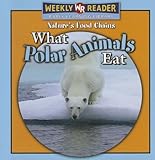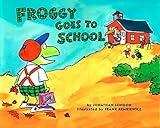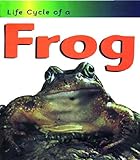Lesson 2: Purposes of Reading Fiction and Nonfiction
Lesson Plan
Nature's Food Chains: What Polar Animals Eat

- Learning Goal
- Identify and describe the purposes of reading a fiction book.
- Identify and describe the purposes of reading a nonfiction book.
- Duration
- Approximately 50 minutes
- Necessary Materials
- Provided: Independent Practice Worksheet
Not Provided: Nature’s Food Chains: What Polar Animals Eat by Joanne Mattern, Froggy Goes to School by Jonathan London and Life Cycle of a Frog by Angela Royston, fiction books from classroom library
-
Teacher Modeling

will explain that there are different purposes of reading fiction and nonfiction. I will tell a story about how I wanted to get a new pet dog, but I needed to know how to take care the dog. I will explain that I would want to read a nonfiction book that would teach me how to take care of my dog. When I am reading before I go to bed, on the other hand, I may want to read a fiction story just to enjoy it. I will show the cover of a favorite fiction read-aloud book and the cover of Nature’s Food Chains: What Polar Animals Eat by Joanne Mattern. I will model how to think about why I might want to read each book. For example, I will tell students, “If I wanted to know what polar bears or walruses eat, I would want to read this book because it will teach me what foods these animals eat.”
TIP: Provide a variety of books and the reasons a reader would choose to read each book. For example, if I am in the mood to be scared, I may read a scary fiction story to entertain myself.
-
Think Check
Ask: "How can I decide whether I should read a fiction book or a nonfiction book?" Students should respond that you should think about if you want to learn new information (nonfiction) or if you only want to be entertained (fiction).
-
Guided Practice

will look at the cover of a favorite fiction read-aloud book and the cover of Nature’s Food Chains: What Polar Animals Eat. I will provide several examples of why someone would want to read each book, and students will determine which book I should read. For example, I will tell students, “If I wanted to read a make-believe story, which would I read? Why?” I will read a few paragraphs from each book to give the students clear examples of fiction and nonfiction texts.
-
Independent Practice

will provide examples of reasons to read Life Cycle of a Frog and Froggy Goes to School. (Independent Practice Worksheet is provided.)
Texts & Materials
Standards Alignment
(To see all of the ReadWorks lessons aligned to your standards, click here.)




These lessons are just what I need for my teaching of fiction and nonfiction. Thank you.